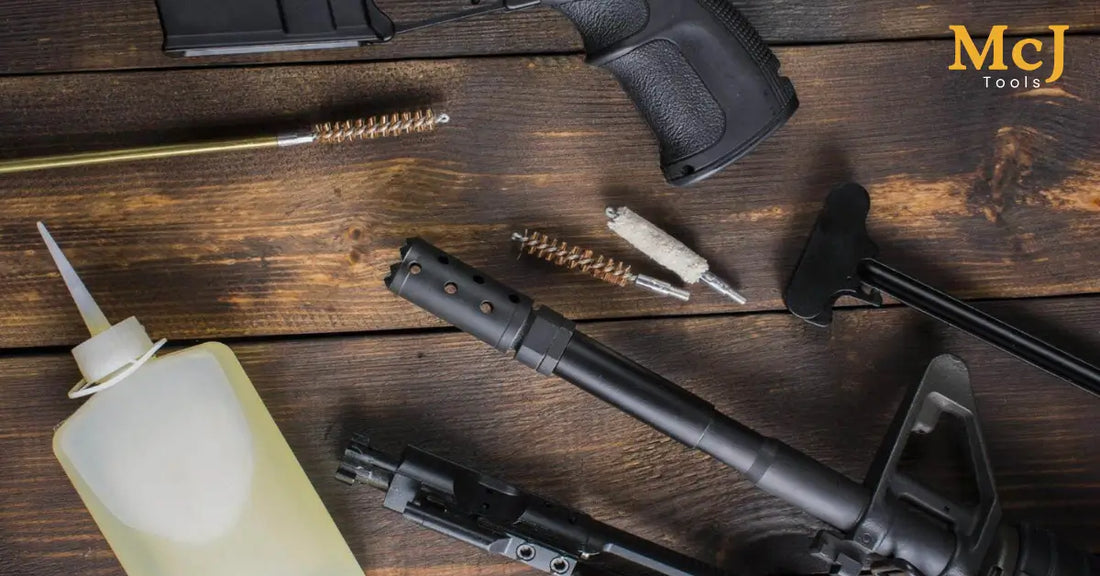
Carbon Fouling Removal: Best Practices for Your Rifle Barrel
Share
Carbon Fouling Removal: Best Practices for Your Rifle Barrel

Every round you fire leaves behind residue—powder, carbon, unburned propellant—that adheres to your barrel’s bore and action. Over time, **carbon fouling** degrades accuracy, increases pressures, and can eventually damage the rifling. Removing carbon fouling is a critical part of rifle maintenance and bore cleaning. In this guide, we’ll walk you through effective methods, tools (especially bore brush selection), and tips to restore your barrel’s performance.
What Is Carbon Fouling and Why It Matters
Carbon fouling is the black, sooty residue left after combustion. It tends to deposit in the throat, chamber mouth, and bore, especially near the lands and grooves. Unlike copper fouling (which is metallic in nature), carbon is harder to dissolve and requires mechanical assistance—this is where a good bronze bore brush becomes indispensable.
According to a technical deep dive by Coyote Stuff, persistent carbon buildup can lead to uneven pressures and accuracy degradation over time. Their guide emphasizes using the proper solvents and mechanical agitation to break it free. (Source: CoyoteStuff)
Essential Tools for Carbon Fouling Removal
- Bronze bore brushes (caliber-matched) — provide the scrubbing action needed to dislodge carbon.
- Bore guide — protects the chamber and centers the rod for safer cleaning.
- Cleaning rod or segmented rod — rigid enough to push brush and patches cleanly through the barrel.
- Solvent / carbon breaker — use a high-quality solvent designed to attack carbon (not just copper).
- Cleaning patches / mops — to carry away loosened residue.
- Nylon brushes / utility brushes — for the chamber, bolt face, and action areas.
Step-by-Step: How to Remove Carbon Fouling
- Unload and clear the rifle. Safety always comes first.
- Remove the bolt or open the action. This gives access to the chamber and throat.
- Use a bore guide. Insert the guide to protect your action and chamber area from solvent intrusion.
- Apply solvent to patches. Run a solvent-soaked patch through the bore to start dissolving superficial carbon.
- Brush with a bore brush. Using a bronze bore brush, push through from chamber to muzzle 8–12 passes. Don’t reverse direction inside the barrel—always push forward to avoid damage.
- Patch until clean. Alternate between solvent patches and dry patches until the patches come out virtually clean.
- Final polishing (optional). Use a cotton mop or patch with light oil to leave a protective film on the bore.
- Reassemble and function check. Work the action and dry-fire (if safe) to ensure everything cycles smoothly.
Tips & Techniques from the Field
Here are a few expert tips to optimize your carbon fouling removal routine:
- Soak when heavy buildup is present. Let a solvent-soaked patch sit in the throat for several minutes before brushing.
- Don’t over-brush. Excessive brushing can wear rifling; limit to when necessary.
- Flush after carbon breaks loose. Use clean patches to wash away residue rather than letting it redeposit.
- Keep your rods clean. A dirty rod can re-deposit fouling—wipe it periodically.
Troubleshooting Common Issues
- Hard carbon you can’t break: Try a more aggressive carbon solvent or a soft nylon brush to loosen it first.
- Patch never gets clean: Reassess your brushing technique or check for copper fouling instead.
- Torque or hoop stress issues: Always allow sufficient cure time for solvent and never force components back together.
Integrating Carbon Fouling Removal into Routine Maintenance
Consider a cleaning schedule like this:
- **After every heavy shooting session:** Do a full carbon removal pass.
- **After moderate use:** Just solvent + brushing is often sufficient.
- **During seasonal storage:** Clean, oil lightly, and protect with covers to prevent buildup.
Why MCJ Tools Is Your Carbon Removal Partner
At MCJ Tools, we design our bronze bore brushes, rods, and cleaning kits knowing exactly how much abuse they must endure in real firearm use. Our kits are built with both precision and ruggedness in mind—trusted by competitors, hunters, and maintenance professionals alike.
Take control of carbon fouling today—shop our premium bore cleaning kits and tools built to last.